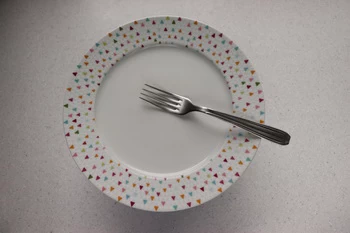This site uses only a few technical cookies necessary for its operation. By continuing to browse, you accept their use.
To find out more...
To find out more...
The delicate blend of flavors in salads

As I write these lines, we're deep into winter, and it's often time for raclettes, tartiflettes and other dishes that keep us warm, especially when the weather's as cold as it is right now.
But we mustn't deprive ourselves of salads, precious sources of vitamins in these cold and sometimes dark months.
But we mustn't deprive ourselves of salads, precious sources of vitamins in these cold and sometimes dark months.
6,878 4.9/5 (18 reviews)
Keywords for this post:SaladsHerbsFlavoursMixingTastePatienceLast modified on: January 11th 2021
The delicate blend of flavors in salads
Salads, as we've already talked about with herbs, are really quite simple: you mix the ingredients you've chosen, and the choice is almost infinite, add a few herbs, some sauce, and you're ready to go.
That's exactly it, but you can do better by simply playing with the chronology, without rushing, here's what you could do:
In this way, the carrots will become fragrant with the flavours of the parsley and shallot, before being mixed into the dressing.
It's a simple gesture, but one that significantly improves the taste of your salad.
Finally, add the dressing and mix again, at the last moment, before serving.
It's not much, but it's a small gesture that allows you to take full advantage of the flavors herbs bring to your salad.
To sum up: When preparing a salad, mix the ingredients with the herbs, without the dressing, and leave to rest for around 30 minutes, covered, for a better blend of flavours. Only then add the dressing and serve.
That's exactly it, but you can do better by simply playing with the chronology, without rushing, here's what you could do:
 1) Put all the ingredients for your salad, in this case a simple salad of grated carrots, into the salad bowl.
1) Put all the ingredients for your salad, in this case a simple salad of grated carrots, into the salad bowl.
 2) Add the herbs, in this case coarsely chopped parsley and a finely chopped shallot.
2) Add the herbs, in this case coarsely chopped parsley and a finely chopped shallot.
 3) Mix well with a fork, but don't add the sauce.
3) Mix well with a fork, but don't add the sauce.
 4) And here's the trick: cover with a plate and leave to rest for around 30 minutes.
4) And here's the trick: cover with a plate and leave to rest for around 30 minutes.
In this way, the carrots will become fragrant with the flavours of the parsley and shallot, before being mixed into the dressing.
It's a simple gesture, but one that significantly improves the taste of your salad.
Finally, add the dressing and mix again, at the last moment, before serving.
It's not much, but it's a small gesture that allows you to take full advantage of the flavors herbs bring to your salad.
To sum up: When preparing a salad, mix the ingredients with the herbs, without the dressing, and leave to rest for around 30 minutes, covered, for a better blend of flavours. Only then add the dressing and serve.
Lasts posts
Butter vs. grease
We often read in a recipe where a pastry is put into a mould that, just before pouring, the mould should be buttered or greased. But what's the difference between these 2 terms?December 1st 20251,3625
Getting out of the fridge early
Very often when you're cooking, you need to take food or preparations out of the fridge, to use them in the recipe in progress. There's nothing tricky about this: you just take them out of the fridge and use them, usually immediately, in the recipe. But is this really a good method?November 24th 20251,2625
Who's making the croissants?
When you look at a bakery from the outside, you naturally think that in the bakery, the bakers make the bread, and in the laboratory, the pastry chefs make the cakes. It's very often like that, with each of these professions having quite different ways of working, but sometimes there's also one...November 23th 20251,146
Oven height
When we put a dish or cake in the oven, we naturally tend to put it on the middle shelf, and that's what we usually do. But in some cases, this position and height can be a little tricky, so let's find out why.October 8th 20253,1835
The importance of sieving
In recipes that use a fine powder (flour, powdered sugar, etc.), you'll often see the advice to sift before using it. To sift is to pass the powder in question through a sieve (a very fine strainer) before incorporating it into your recipe. It's often advice, but is it really useful?September 3rd 20257,8363
Other pages you may also like
Butter doesn't make you fat, unless you eat too much of it.
Whenever I'm discussing cooking and recipes, there is one idea which comes up frequently, like this: "Oh no! But that's got butter in it" (I should add, for the sake of accuracy, that this is something I hear more frequently from women, who are almost all concerned with keeping their figure). ...March 26th 201245 K4.5
Candied fruits: don't get ripped off
Do you like candied fruit? You might like to nibble a handful or add it to a recipe, like a classic fruit cake or delicious Italian specialities like panettone or sicilian epiphany pie.June 21th 201767 K 24.2
The power of sayings and beliefs in the kitchen
One day, in the comments on the recipe for beaten egg whites, a young woman asked if you could beat egg whites stiff while having a period, as a friend had told her it wasn't possible. Sometime later another person commented that for mayonnaise it had been (get this!) scientifically proven that a...February 6th 201152 K4.4
Too much sweet and savoury
There is a food trend which is creeping in everywhere in France right now: mixing sweet with savoury. In some restaurants, it is becoming difficult to order a classic dish, like “roast veal” for instance, without being served fruits in the garnish or honey/conserves/syrup in the sauce or cooked...November 3rd 201127 K4.5
Different kinds of pastry and dough
When cooking in general, and particularly in baking, we can make and use many different kinds of pastry and dough. All built on the same "base": flour - a powder to which we add fat, liquid or both to produce the dough which is then cooked. .November 6th 2012111 K 14.0
Post a comment or question
Follow this page
If you are interested in this page, you can "follow" it, by entering your email address here. You will then receive a notification immediately each time the page is modified or a new comment is added. Please note that you will need to confirm this following.
Note: We'll never share your e-mail address with anyone else.
Alternatively: you can subscribe to the mailing list of cooling-ez.com , you will receive a e-mail for each new recipe published on the site.









